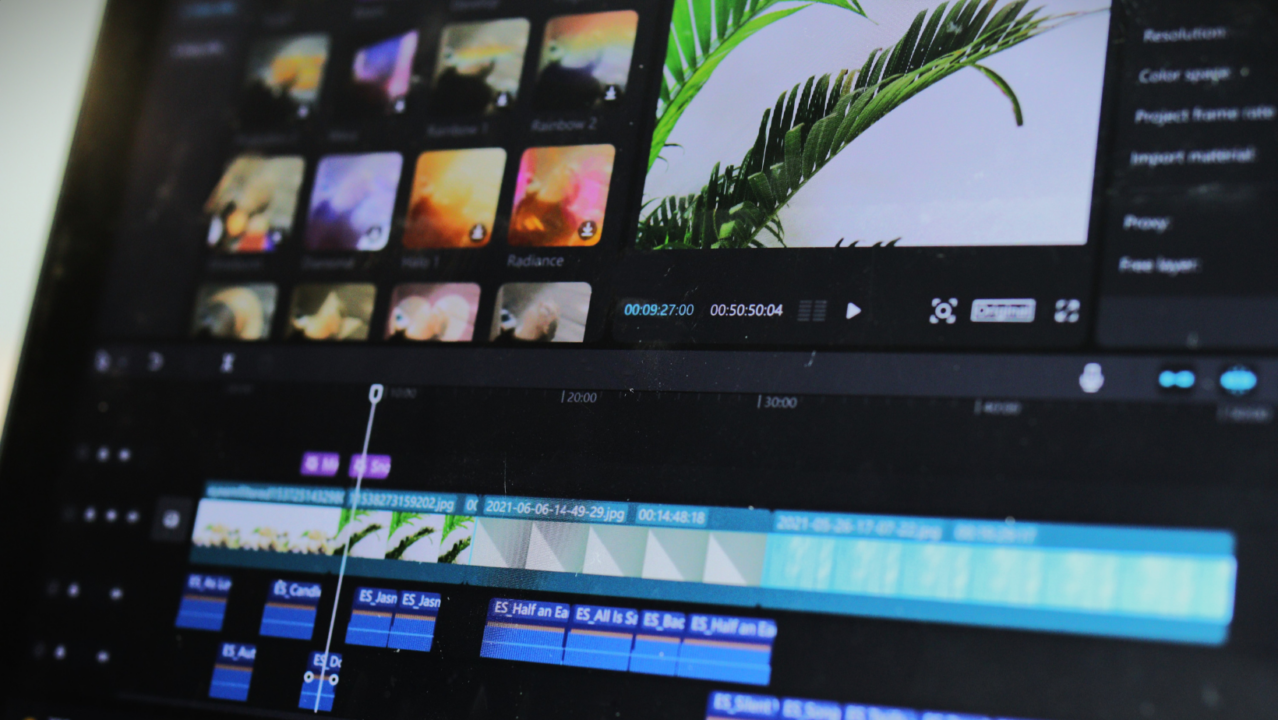In today’s media-rich world, subtitles play an indispensable role in making content accessible, inclusive, and enjoyable for diverse audiences across the globe. They bridge language barriers, enhance comprehension, and cater to the needs of the hearing impaired. But creating accurate and timely subtitles is no small feat—it demands attention to detail, a deep understanding of the content, and, importantly, collaboration.
Table of contents

Overview of Subtitles in Media Content
Subtitles are more than just text at the bottom of the screen; they are a vital tool that ensures media content is universal. Whether it’s a blockbuster movie, an educational course, or a viral video, subtitles extend the reach of these media pieces to wider audiences, transcending linguistic and auditory limitations. They are crucial for comprehension, especially in content where clarity of dialogue is essential for understanding and enjoyment.
Collaborative subtitle creation is a method where a team, rather than an individual, works together to produce subtitles. This approach leverages the diverse skills and perspectives of team members, significantly enhancing the quality and speed of the subtitle creation process. By dividing tasks, sharing responsibilities, and working concurrently, teams can tackle larger projects more efficiently and with greater attention to detail.
When media teams come together to generate subtitles, the synergy can lead to remarkable outcomes. Collaboration fosters a dynamic exchange of ideas and techniques, which can improve the accuracy and richness of the subtitles. Team members can cross-verify each other’s work, catching and correcting errors that might elude a single individual. Moreover, collaborative efforts can significantly expedite the subtitle creation process, enabling media teams to meet tight deadlines without compromising quality. In essence, teamwork in subtitle generation not only enhances the end product but also boosts productivity and job satisfaction among team members.
The Process of Collaborative Subtitle Creation

Creating subtitles as a team transforms what is often a solitary task into an interactive and dynamic process. To maximize efficiency and ensure high-quality output, it’s crucial to understand the mechanics of collaborative subtitle creation.
Defining Roles Within the Subtitle Creation Team
In a collaborative environment, clearly defined roles are the backbone of success. Typically, a subtitle creation team might include a project manager, translators or transcribers, editors, and quality assurance specialists. The project manager oversees the entire operation, ensuring deadlines are met and standards are upheld. Translators or transcribers generate the initial subtitle text, which is then passed on to editors who refine the language, ensure synchronicity with the audio, and maintain consistency in style. Finally, quality assurance specialists review the subtitles in the context of the video to guarantee accuracy, readability, and compliance with any relevant guidelines.
Workflow Overview for Collaborative Subtitle Creation
Effective collaboration hinges on a well-structured workflow. Initially, the video content is divided into manageable sections, allowing team members to work simultaneously on different parts. This parallel processing significantly accelerates the subtitle creation timeline. The process typically follows a sequential path: transcription, translation (if necessary), editing, and quality assurance. Throughout these stages, team members communicate regularly, providing updates and feedback to ensure alignment and address any issues that arise.
Tools and Software That Facilitate Collaboration
The right tools and software are vital in enabling a seamless collaborative subtitle creation process. Cloud-based platforms allow team members to access and edit subtitle files in real time, regardless of their location. These platforms often feature version control, ensuring that changes are tracked and no work is lost or overwritten. Communication tools integrated within these platforms or used alongside them enable instant feedback and discussion, vital for resolving questions or discrepancies quickly. Additionally, some subtitle creation software includes features specifically designed for teamwork, such as task assignments, progress tracking, and comment functions, further enhancing collaboration and efficiency.
Enhancing Accuracy in Subtitles

Accuracy in subtitles is paramount; it ensures the message is conveyed correctly and maintains the integrity of the original content. Collaborative efforts significantly boost the precision of subtitles, addressing the multifaceted nature of language and communication.
Division of Labor to Improve Focus and Reduce Errors
By dividing the subtitle creation process among specialized team members, each individual can concentrate on their area of expertise, reducing the likelihood of errors. For instance, a linguist might focus on the accuracy of translation, while a technical expert ensures the subtitles are correctly timed with the audio. This division of labor not only improves focus and efficiency but also allows for a deeper level of scrutiny at each stage of the process, minimizing mistakes and enhancing the overall quality of the subtitles.
Peer Review Processes and Their Importance
Peer review is a critical component of the subtitle creation process, providing an additional layer of verification to catch and correct potential errors. After an initial draft of subtitles is created, it is passed on to another team member for review. This person evaluates the subtitles for accuracy, timing, and readability, offering a fresh perspective that can identify issues overlooked by the original author. This collaborative review process helps to ensure that the final product is polished, professional, and free of errors.
Utilizing Diverse Team Expertise for Nuanced Content
Media content often contains complex, nuanced material that can be challenging to subtitle accurately. Collaborative teams, particularly those with diverse linguistic and cultural backgrounds, can draw on their collective expertise to navigate these challenges effectively. For instance, idiomatic expressions, regional dialects, or culturally specific references may be misunderstood or inaccurately translated without input from someone familiar with the source material’s context. By leveraging the varied skills and knowledge of a diverse team, media groups can produce subtitles that are not only accurate but also culturally and contextually appropriate, enhancing the viewing experience for audiences worldwide.
Increasing Speed in Subtitle Production

In the fast-paced world of media production, speed is of the essence. Subtitle creation, when done collaboratively, can be significantly expedited, ensuring media content is accessible and available to international audiences without delay.
Parallel Processing in Subtitle Generation
One of the key advantages of a collaborative approach to subtitle creation is the ability to work on different parts of the same project simultaneously. This method, known as parallel processing, allows teams to divide the video content into sections and assign each part to different team members. While one person transcribes the first segment, another can start on the second, and so on, drastically reducing the total time required for subtitle generation. This concurrent workflow enables teams to meet tight deadlines and deliver subtitles much faster than would be possible with a sequential approach.
Efficient Communication Strategies Within Teams
Effective communication is the linchpin of successful collaborative subtitle creation. Establishing clear, efficient communication protocols can significantly reduce downtime and prevent bottlenecks in the production process. Regular check-ins, clear task assignments, and defined communication channels ensure that everyone is on the same page and can quickly address any questions or issues that arise. By maintaining open lines of communication, team members can swiftly relay updates, share feedback, and make necessary adjustments, all of which contribute to a faster subtitle creation process.
Leveraging Collaborative Tools for Real-Time Editing and Feedback
Modern collaborative tools have revolutionized the way teams work together on subtitle creation. These platforms allow multiple users to access and edit subtitle files in real time, providing immediate visibility into each team member’s contributions and progress. Real-time editing capabilities eliminate the need for back-and-forth file transfers, reducing delays and enabling instant revisions. Furthermore, integrated feedback features allow team members to leave comments and suggestions directly on the subtitle file, streamlining the review and refinement process. By harnessing these collaborative tools, teams can work more cohesively and efficiently, dramatically accelerating the subtitle production timeline.
Technology Integration in Collaborative Subtitling

Incorporating technology into the subtitle creation process can significantly enhance both the efficiency and quality of the output. By leveraging advanced tools and platforms, media teams can streamline their workflows and foster better collaboration.
AI-Assisted Transcription Services as a Starting Point
AI-assisted transcription services provide a powerful foundation for collaborative subtitle creation. These tools use advanced speech recognition algorithms to convert spoken language into text, producing a rough transcript that can serve as a starting point for subtitlers. While AI-generated transcriptions may not be perfect, they can significantly reduce the initial time and effort required for manual transcription. Once the AI has provided the initial text, team members can then focus on refining and editing the subtitles, ensuring they accurately represent the audio and are properly synchronized with the video.
Real-Time Collaboration Platforms
Real-time collaboration platforms are essential for modern subtitle creation teams, enabling multiple users to work on the same subtitle file simultaneously from different locations. These platforms often include features such as live chat, file sharing, and version control, facilitating seamless communication and coordination among team members. By working in a shared digital environment, teams can instantly see each other’s contributions, make real-time edits, and provide immediate feedback, all of which contribute to a more dynamic and efficient subtitle creation process.
Advancements in Software That Support Team-Based Subtitle Workflows
The continuous development of specialized subtitle creation software has introduced numerous features specifically designed to support collaborative workflows. These advancements may include integrated project management tools, automated workflow assignments, and enhanced editing features that allow for precise control over subtitle timing and placement. Additionally, some software solutions now offer cloud-based storage and backup, ensuring that work is not lost and can be accessed from anywhere, further supporting the collaborative nature of modern subtitle production. By staying abreast of these technological advancements and integrating them into their workflows, media teams can significantly improve their productivity and the quality of their subtitle output.
Future Trends in Collaborative Subtitling

As the media industry continues to evolve, so too will the methods and technologies used in subtitle creation. Collaborative subtitling, a field that merges linguistic skill with technological prowess, is poised for exciting advancements.
Predictions for Technology Advancements
In the realm of technology, we can anticipate significant advancements that will further streamline the subtitling process. Machine learning and AI capabilities are expected to become more sophisticated, offering even greater accuracy in speech-to-text transcription and translation. These improvements will expedite the initial phases of subtitle creation, allowing human subtitlers to focus on refinement and localization nuances.
Emerging technologies like real-time subtitling and automatic synchronization could also transform the landscape, enabling even faster turnarounds for live broadcasts and online content. Additionally, we might see the integration of more advanced user interfaces in subtitling software, which would offer enhanced customization and flexibility, accommodating a broader range of languages and subtitle formats.
The Evolving Role of Human Expertise in Subtitle Creation
While technology will undoubtedly play a crucial role in the future of subtitling, the human element will remain indispensable. Expertise in linguistics, cultural context, and content-specific nuances cannot be fully replicated by machines. As such, the future will likely see a more symbiotic relationship between technology and human skill, where AI assists with the heavy lifting of transcription and translation, while humans focus on quality control, context interpretation, and creative aspects of subtitle writing.
Professionals in the field will need to adapt to these changes, embracing new tools and methodologies while honing their critical thinking and editorial skills to maintain the quality and relevance of their work.
Potential for Global Collaboration Across Media Teams
The trend toward global collaboration is set to intensify, facilitated by advancements in communication and project management platforms. Media teams from different parts of the world can collaborate seamlessly, bringing together diverse expertise and insights to enhance subtitle quality and cultural relevance.
This global network of collaboration could lead to a more inclusive media landscape, with content that is accessible and relevant to a broader audience. It may also foster innovation in subtitle creation, as teams draw on a wider range of experiences and technological capabilities. Moreover, this interconnected approach could accelerate the subtitling process for international releases, ensuring that audiences worldwide gain access to content simultaneously, fostering a more unified global media experience.
